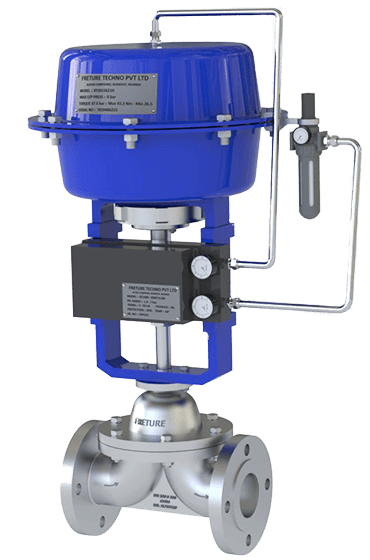Diaphragm control valves play a crucial role in precise fluid flow regulation across industries such as pharmaceuticals, chemical processing, water treatment, and food & beverage production. These valves are known for their leak-proof operation, corrosion resistance, and suitability for hygienic applications. Understanding their principle of operation is essential for selecting the right valve for different industrial needs.
Principle of Operation
The working principle of a diaphragm control valve revolves around the movement of a flexible diaphragm that controls the flow of fluid or gas through a pipeline. The diaphragm is a key component that acts as a barrier between the fluid and the valve mechanism, ensuring zero contamination and precise control.
Valve Open Position: When the actuator or handwheel is engaged, it lifts the diaphragm away from the valve seat, allowing unrestricted flow of fluid through the valve body.
Flow Regulation: As the diaphragm moves downward or upward, it partially restricts the flow, enabling precise control over pressure and flow rate.
Valve Closed Position: When fully engaged, the diaphragm presses against the valve seat, completely stopping the flow, ensuring leak-tight sealing even in high-pressure systems.
Key Components Involved in Operation
Diaphragm: A flexible membrane, typically made of PTFE, EPDM, or rubber, responsible for flow control and sealing.
Valve Body: Houses the internal mechanism and determines flow capacity.
Actuator: Can be manual, pneumatic, or electric, providing force to move the diaphragm.
Bonnet & Stem: Protect and guide the movement of the diaphragm.
Advantages of Diaphragm Control Valves
Leak-Proof Performance: Ensures a hermetic seal, preventing fluid leakage.
Corrosion Resistance: Suitable for aggressive chemicals and high-purity applications.
Minimal Maintenance: Fewer moving parts reduce wear and tear.
Precise Flow Regulation: Ideal for low-pressure and high-purity processes.
Hygienic Design: Preferred for pharmaceutical, food, and biotech industries due to zero contamination risk.
Common Applications
Pharmaceutical Industry: Used in sterile and cleanroom environments.
Chemical Processing: Handles corrosive and hazardous chemicals.
Water Treatment Plants: Regulates the flow of filtration and disinfection chemicals.
Food & Beverage Production: Ensures sanitary processing of liquids.
Conclusion
Diaphragm control valves provide high-precision fluid regulation, durability, and reliability across multiple industries. Their ability to prevent contamination, offer leak-proof performance, and withstand aggressive chemicals makes them a preferred choice for applications requiring strict process control and hygiene compliance. Choosing the right diaphragm valve ensures optimum efficiency, safety, and longevity in industrial operations.

No comments:
Post a Comment